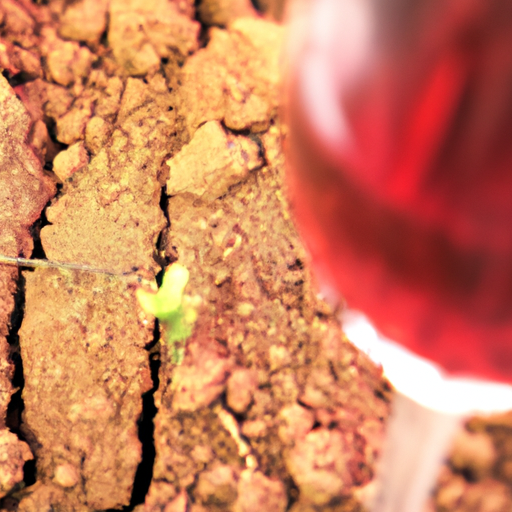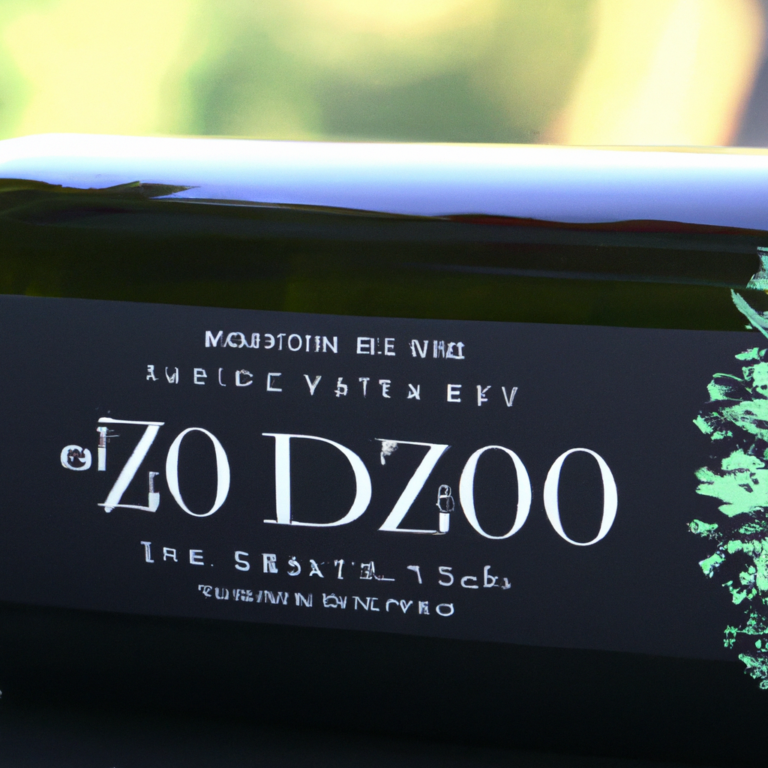The Relationship Between Wine and Soil
The Impact of Soil Composition on Wine Quality
The quality of wine is influenced by a multitude of factors, including climate, grape variety, and winemaking techniques. However, one often overlooked aspect that plays a crucial role in determining the character and flavor profile of wine is the soil in which the grapes are grown. The relationship between wine and soil is a complex one, with the composition of the soil directly impacting the quality and characteristics of the final product.
Soil composition refers to the combination of minerals, organic matter, and water content present in the soil. Different types of soil, such as clay, loam, and sand, have varying levels of these components, which in turn affect the growth and development of grapevines. The composition of the soil influences the availability of nutrients, water drainage, and root development, all of which are essential for healthy vine growth.
Clay soils, for example, have a high water-holding capacity, which can be both beneficial and detrimental to grapevines. On one hand, the ability to retain water during dry periods can help sustain the vines. On the other hand, excessive water retention can lead to poor drainage, which can result in root rot and other diseases. Additionally, clay soils tend to be rich in nutrients, providing ample nourishment for the vines. This can contribute to the development of complex flavors and aromas in the grapes, ultimately enhancing the quality of the wine.
In contrast, sandy soils have a low water-holding capacity and drain quickly. While this can be advantageous in preventing waterlogged conditions, it also means that sandy soils have a lower nutrient content. Grapevines grown in sandy soils may struggle to obtain sufficient nutrients, resulting in weaker vines and potentially lower-quality grapes. However, sandy soils can impart desirable characteristics to the wine, such as a lighter body and more delicate flavors.
Loam soils strike a balance between clay and sandy soils, offering good drainage while retaining adequate moisture and nutrients. This balanced composition makes loam soils highly suitable for grape cultivation, as they provide optimal conditions for vine growth. Grapes grown in loam soils often exhibit a harmonious balance of acidity, fruitiness, and tannins, resulting in well-rounded and complex wines.
In addition to the physical composition of the soil, its pH level also plays a significant role in wine quality. The pH level affects the availability of nutrients to the grapevines and influences the chemical reactions that occur during fermentation. Generally, a slightly acidic soil with a pH level between 6 and 7 is considered ideal for grape cultivation. This acidity helps to maintain the balance of flavors in the grapes and contributes to the overall quality of the wine.
It is worth noting that the relationship between wine and soil is not limited to the physical and chemical aspects alone. The concept of terroir, a French term that encompasses the unique combination of soil, climate, and geography, also comes into play. Terroir is believed to impart a distinct sense of place to the wine, reflecting the characteristics of the specific vineyard site. The soil composition, along with other environmental factors, contributes to the terroir and ultimately shapes the flavor profile and quality of the wine.
In conclusion, the impact of soil composition on wine quality cannot be underestimated. The physical and chemical properties of the soil, as well as its pH level, directly influence the growth and development of grapevines, which in turn affects the flavor, aroma, and overall quality of the wine. Understanding the relationship between wine and soil is essential for winemakers and wine enthusiasts alike, as it provides valuable insights into the complex and fascinating world of wine production.
Exploring Terroir: How Soil Characteristics Influence Wine Taste

The Relationship Between Wine and Soil
Wine is a complex and nuanced beverage that has captivated people for centuries. From the vineyards of France to the rolling hills of California, wine production is an art form that relies on a multitude of factors to create the perfect bottle. One of the most important factors in wine production is the soil in which the grapes are grown. The relationship between wine and soil, known as terroir, is a fascinating and intricate one that greatly influences the taste and quality of the final product.
Terroir is a French term that encompasses the unique combination of factors that contribute to the character of a wine. These factors include the climate, topography, and most importantly, the soil. Soil characteristics play a crucial role in the development of the grapevine and ultimately, the flavor profile of the wine. Different types of soil can impart distinct flavors and aromas to the grapes, resulting in a wide range of wine styles.
One of the key ways in which soil influences wine taste is through its ability to retain and drain water. Soil with good drainage allows excess water to flow away, preventing the roots from becoming waterlogged. This is particularly important for grapevines, as they prefer well-drained soil. When the soil retains too much water, it can lead to overgrowth and dilution of flavors in the grapes. On the other hand, soil with poor drainage can cause stress to the vines, resulting in concentrated flavors and higher acidity in the wine.
Another important aspect of soil is its composition. Different types of soil contain varying amounts of minerals, organic matter, and nutrients. These elements are absorbed by the grapevine’s roots and contribute to the overall health and development of the plant. For example, soil rich in limestone can impart a mineral character to the wine, while volcanic soils can add a distinct smoky or earthy note. The presence of certain nutrients in the soil, such as nitrogen or potassium, can also affect the grapevine’s growth and the resulting flavors in the wine.
Soil texture is yet another factor that influences wine taste. The texture of the soil refers to the size of its particles, which can range from sandy to clayey. Sandy soils, with their larger particles, tend to drain quickly and produce lighter-bodied wines with less tannin. Clayey soils, on the other hand, have smaller particles that retain water and nutrients, resulting in fuller-bodied wines with more tannin. Loamy soils, which contain a balanced mixture of sand, silt, and clay, are often considered ideal for grape cultivation as they provide good drainage while retaining moisture and nutrients.
In addition to these factors, the pH level of the soil can also impact wine taste. The pH level refers to the acidity or alkalinity of the soil, with a pH of 7 being neutral. Most grapevines prefer slightly acidic soil, as it allows for better nutrient absorption. However, extreme acidity or alkalinity can affect the grapevine’s ability to take up essential nutrients, leading to imbalances in the grapes and ultimately, the wine.
In conclusion, the relationship between wine and soil is a complex and intricate one. The characteristics of the soil greatly influence the taste and quality of the wine, contributing to its unique flavor profile. Factors such as drainage, composition, texture, and pH level all play a role in shaping the grapes and the resulting wine. Understanding the impact of soil on wine production is essential for winemakers and enthusiasts alike, as it allows for a deeper appreciation of the art and science behind this beloved beverage.
Unveiling the Secrets of Soil: Understanding the Connection with Wine Production
The relationship between wine and soil is a fascinating and complex one. Soil plays a crucial role in the production of wine, influencing the flavor, aroma, and overall quality of the final product. Understanding this connection is essential for both winemakers and wine enthusiasts alike.
One of the key factors that soil contributes to wine production is its ability to provide nutrients to the grapevines. Different types of soil contain varying levels of essential minerals such as potassium, calcium, and magnesium. These minerals are absorbed by the grapevines through their roots and are then transported to the grapes themselves. The presence of these minerals in the grapes can greatly impact the taste and character of the resulting wine.
In addition to providing nutrients, soil also affects the drainage and water-holding capacity of the vineyard. Some soils, such as sandy or gravelly soils, drain water quickly, while others, like clay soils, retain water for longer periods. The ability of the soil to regulate water availability to the grapevines is crucial for their growth and development. Too much water can lead to dilution of flavors in the grapes, while too little water can result in stressed vines and reduced grape quality.
The composition of the soil also influences the pH level of the vineyard. pH is a measure of the acidity or alkalinity of the soil, and it has a significant impact on the growth of grapevines. Most grape varieties prefer slightly acidic soils, with a pH range of 6 to 7.5. Soils with a pH outside of this range can affect the availability of nutrients to the vines and can even lead to nutrient deficiencies or toxicities. Therefore, maintaining the optimal pH level in the vineyard is crucial for the health and productivity of the grapevines.
Another important aspect of the relationship between wine and soil is the concept of terroir. Terroir refers to the unique combination of soil, climate, and topography that gives a wine its distinct characteristics. The soil type is a fundamental component of terroir, as it contributes to the flavor profile and overall style of the wine. For example, wines produced from limestone-rich soils often exhibit mineral notes and high acidity, while wines from volcanic soils may have a more intense and complex flavor profile.
Understanding the relationship between wine and soil is not only important for winemakers but also for wine enthusiasts. By knowing the characteristics of different soil types, wine lovers can better appreciate and evaluate the wines they taste. They can identify the influence of the soil on the wine’s flavor, structure, and overall quality. This knowledge can enhance the enjoyment of wine and deepen one’s appreciation for the art and science of winemaking.
In conclusion, the relationship between wine and soil is a complex and multifaceted one. Soil provides essential nutrients to the grapevines, regulates water availability, and influences the pH level of the vineyard. The composition of the soil contributes to the unique characteristics of the wine, forming an integral part of its terroir. Understanding this connection is crucial for both winemakers and wine enthusiasts, as it enhances the quality and appreciation of wine. So, the next time you raise a glass of wine, take a moment to ponder the secrets hidden beneath the soil that have contributed to its creation.







